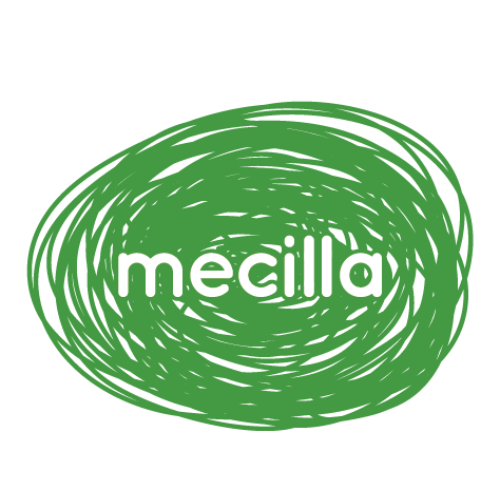Bamboo Viscose
As soft as silk, half the price and fast-growing without water, pesticides or fertilisers, Bamboo textiles have lots of potential as a sustainable textile, not to mention the softness and kind-to-skin properties that make them feel amazing. Bamboo is simply the fastest growing, high yield, low input crop in the world.
But does a sustainable plant make a sustainable textile? The answer is not as simple as it seems.
Cotton is the most popular choice for soft clothing worldwide. It requires around 20’000 litres of water per kilogram to grow and the chemicals needed to sustain its growth, and prevent pests destroying it, are extremely hazardous to the health of ecosystems. Bamboo fabric is an alternative. Despite being a hard woody grass crop, it is possible to derive an incredibly soft, breathable fabric from it. In fact the bamboo fabric we use feels softer and more breathable than our organic cotton.
What’s so good about Bamboo?
Bamboo thrives naturally without using any pesticides or fertilizers. It is unlike all other natural textiles plants: The yield per hectare is 10 times greater than cotton and the input of water, fertilisers and other resources is almost zero. It’s a grass too, so it doesn’t need replanting – which helps reduce topsoil erosion. It grows up to a yard a day in places, efficiently pulling in sunlight and greenhouse gases and converting it into biomass. For these reasons, Bamboo is amongst the world’s most sustainable resources.
So Bamboo plants are great. How about bamboo fabric?
Unfortunately, this is where the fun stops and things get more complicated. Bamboo is a hard material, and to make it into a soft material, it needs energy input – processing.
Bamboo fabric is what is called a reconstructed or “semi synthetic” fabric. Instead of possessing naturally occurring fibrous consistency that can be spun into threads and then a material, bamboo is reduced down to the most basic elements at molecular level (polymers) and then this goo is shot through a nozzle to make stringy bits that get spun into a fabric. It’s a bit like biodiesel. It is a polymer type fabric. These polymers happen to come from plants which are sustainable.
So the real questions about bamboo fabric aren’t questions about whether bamboo is a sustainable crop. It’s about how sustainable the processing of the crop is.
How is it processed?
There are two ways to process bamboo to make the plant into a fabric: mechanically or chemically. The mechanical way works by crushing the woody parts of the bamboo plant then using natural enzymes to break the bamboo walls into a mushy mass. Then (in theory) the natural fibres can be mechanically combed out and spun into yarn. Essentially the same process used to make linen from Hemp –much more benign chemically.
Most often the bamboo is reduced chemically via a process of crushing, cyclical bleaching plus some heating. It means that designers, like us, must choose the source of their fabric, the factory, very carefully. Whilst the conversion of Bamboo plant into Bamboo fabric is a chemically-intensive one, it is very normal for factories to work with this kind of process safely in the EU. The danger is that outside of our familiar regulation, short cuts may be taken. But if managed correctly the technology exists to ensure that making bamboo is a closed-loop process so that no chemicals escape the process into the environment (instead they are continually re-circulated). To shed some more light on this, we've gathered some details of the chemistry.
We source our bamboo fabrics from a factory that has qualified for the Oeko-Tex 100 Standard(Confidence in Textiles) Certification.
This is the best way to ensure that this stage of the supply chain is comprehensively and responsibly cared for – there are no harmful chemicals in the finished product and no harmful chemicals went into the making of the product.
At the end of its life as a natural fabric, Bamboo is 100% Biodegradable unlike synthetic fibres. So you can throw it in your compost heap.
How about the workers involved?
The facility that makes our bamboo clothing is a member of Fair Wear Foundation, and subscribes to their Code of Labour Practice. This ensures that all people involved at the manufacturing stage have clean, safe and well-paid working conditions and get a fair pay deal.
Our conclusions
We are satisfied that all that can be done for the environment, and health and safety, is being done at where our bamboo clothing is made – but our advice is this: Buy your Bamboo carefully.
The Bottom Line on Bamboo Clothing
• Believe in bamboo, but not blindly
• Our Bamboo Clothing is soft, breathable, and hypoallergenic, and has some naturally antibacterial properties: It is soft and kind to skin.
• It is naturally a high-yield and fast-growing crop without need for fertilisers, pesticides or irrigation, and improves soil quality. At the end of its useful life, it is biodegradable.
• Bamboo is Thermo-regulating, with the fibres expanding to breathe when warm, and contracting when cool to increase warmth - natural thermal regulation.
• Bamboo is easier to dye than most natural fabrics meaning less chemical processing at the dyeing stage than cotton or synthetics
• Manufacturing and processing stage can be environmentally friendly - but only if proper certification both for the environment (OEKO-TEX) and the workers (Fair Wear Foundation) can be ensured.
• 80% of the environmental impact of clothing results post-purchase. The majority of the focus of sustainability should be how we wash our clothes, not just how they were made.

